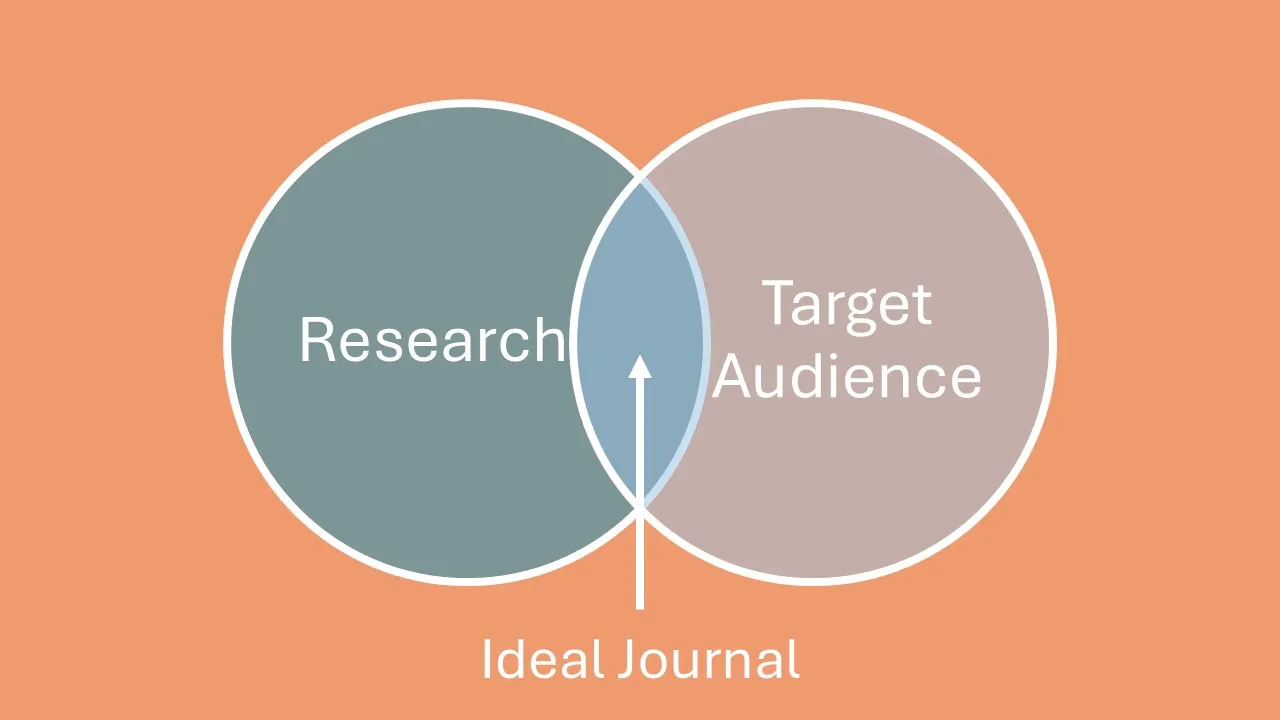Blog • Posted on Aug 27, 2024
7 Things to Consider when Choosing a Scientific Journal
With more than 30,000 scientific journals actively publishing worldwide, choosing where to publish your research article can seem like an impossible task. Thankfully, you only really need to decide from a handful of these for your research to reach the right audience.
Here are 7 things to consider when choosing a scientific journal:
Why choosing a journal matters
It’s easy to glance over why it’s important to choose the right journal when publishing your scientific research paper. You might think that your work will be judged solely on the merit of its content.
But you would be wrong.
Before anyone reads your paper, they have to find it. And journal selection is the deciding factor in determining whether your paper will be found or not.
Think about how you discover new papers to read. It’s likely you have a suite of ‘bread-and-butter’ journals that regularly publish studies relevant to your field or particular sub-discipline.
You might get regular emails from these journals with newly released articles (especially if it’s a society journal and you are a member). Or you might have papers recommended to you on the publishers’ website while reading a colleagues’ paper.
In either case, you want your work to get the same treatment when you publish.
If you publish in a journal that isn’t backed by a publisher with sufficient authority, your paper could get lost in a sea of literature from more credible publishers.
Selecting the right journal also ensures that your paper will be discovered through search.
While there are a host of factors that determine your papers’ ‘searchability’, the journal (and the publisher behind it) play a large role in ensuring your paper is indexed by large online search engines like Google Scholar and Web of Science.
Finally, journal selection matters because you want your paper to be seen by the right people (i.e., your target audience).
1. Readership & target audience

It’s easy to fixate on vanity metrics like impact factor. But at the end of the day, the most important thing is that your work is seen by the right audience.
Long before considering mega-journals like those from the Nature or Science portfolios, you should ask yourself:
- Who do I want to see this research?
- Who would cite my work when writing a paper of their own?
- What kind of researchers would find my study interesting?
Odds are, even if your study were impactful enough to warrant submitting to an elite journal, it would gain more citations in the long run being published in a journal that serves it to the correct audience.
- Specialist journals often have smaller readerships but are composed of specialized researchers that are likely to find discipline-specific studies of interest.
- Generalist journals often boast larger readerships and are better suited to cross-disciplinary studies that aren’t easily encompassed by a single field.
Whichever you decide to aim for, stick to quality over quantity.
2. Historical reputation
Another factor to consider is the historical reputation of the journal. Much like readership, the journal’s historical reputation can have a profound impact on whether your study will be seen or not.
Journal metrics aren’t static. They rise and fall like tides, the ebbs and flows of which are often dictated by swings in what’s popular and the turnover of journal editorial staff.
Given this, it’s sometimes more useful to consider a journals’ reputation in your field.
For example, American Naturalist has practically been furniture in the house of evolutionary biology since 1886 and typically boasts a respectable IF around 4.8. American Naturalists’ impact factor has recently declined however and now sits around 2.4.
Despite this drop, the journal remains well-respected by ecologists and evolutionary biologists alike and you should be proud to have your work published within its’ covers.
Considering a journals’ historical reputation helps avoid fixating on volatile journal metrics like impact factor.
3. Journal metrics
It wouldn’t be a conversation about journal choice without talking about journal metrics.
Journal impact factor gets a lot of flack in the academic arena. The contention largely revolves around whether impact factor is really the best measure of academic rigor and journal merit.
Some journals have elected to not disclose (or at least not advertise) impact factors for this reason. Fortunately, other metrics like Elsevier’s CiteScore and Scimago Journal Rank (SMJ) exist that encompass larger time windows and weigh the importance of where citations originate from.
Regardless of whether or not impact factor is a good metric, it’s impossible to avoid it playing a role in your publishing record, and ultimately, your career. So, don’t ignore it.
4. Article type
Scientific research articles come in all shapes and sizes. From Brief Reports and Letters to the Editor, to Original Articles and Reviews and everything in between.
Most journals publish original articles. But if you’ve written a special format paper like a meta-analysis, synthesis review or perspective piece, your choice of journals may be more restricted.
It’s also worth considering journals that specialize in publishing non-primary article types. For example, Nature Reviews only publishes Reviews, Perspectives, Comments and Research Highlights.
5. Turnaround time and publication frequency
When considering a journal, you should also think about how quickly you need your work published.
Turnaround times vary substantially between journals. Some offer rapid publication for a fee, while others may take months just to get through the review process (be prepared for this as it is commonplace).
Ask yourself:
- How soon do I need this research published?
- Is the research time-sensitive or part of a fast-moving field?
- How often does the journal publish new issues?
High-impact journals often have longer turnaround times due to the volume of submissions and rigorous review processes. If time is important, you might want to consider journals that have shorter review periods or publish more frequently.
6. Publishing model

Traditionally, publishing houses charged their readers to view journal papers in order to turn a profit and cover the cost of publication. However, with time the restriction of access to the scientific literature received widespread criticism, leading to the rise of the Open Access publishing model.
The publishing model of a journal can impact the accessibility and visibility of your work. There are generally three main models to consider:
- Traditional: where readers (or their institutions) pay for access. While these journals often have high prestige, your work may be behind a paywall, limiting its reach.
- Open Access: where your work is freely accessible to anyone. However, you must pay Article Processing Charges (APCs) and these can be lofty.
- Hybrid: where you can choose to pay for open access.
Open Access can significantly increase the visibility and citation of your work, especially in fields where accessibility is key.
Consider your audience and the importance of accessibility when deciding on a publishing model.
7. Article processing charges (APC) and funding
Finally, you need to consider finances when choosing a journal. Article Processing Charges (APCs) can range from a few hundred to several thousand dollars, depending on the journal, particularly if you opt for open access.
Before selecting a journal, ask:
- Do I have the necessary funding to cover the APC?
- Does the journal offer waivers or discounts for authors from developing countries or those without funding?
- Will my institution or funder cover the APC?
Ensure that you factor in these costs early in your planning process. Some grants include provisions for covering APCs, so it’s worth exploring all funding avenues available to you.
Avoid Predatory Journals
In your quest to find the right journal, beware of predatory journals. These journals often have little to no peer review, but charge high APCs and promise quick publication. They may have names similar to well-established journals, making it easy to be deceived.
Always check the credibility of a journal before submitting. Resources like the Directory of Open Access Journals (DOAJ) and Beall's List can help you identify and avoid predatory publishers.
FAQs
Which publishing model should I choose?
It's really a question of funding. If you have the funding to cover the article processing charge (APC) of publishing open access, you should do it. The benefits for accessibility and downstream citations are worth it. Be sure to check whether the journal offers waivers for researchers from developing countries or without funding.
How is impact factor calculated?
Impact factor is defined as the average number of citations received by publications in a given journal. It is calculated by dividing the total number of journal citations in the previous year by the number of source articles these came from.
What are the benefits of writing a review paper?
On average, review papers are cited a lot more than standard articles. This is because they summarise the information contained in many articles. A well written and comprehensive review paper can do wonders for your long-term citations.
Conclusion
Choosing the right journal for your research involves more than just aiming for the highest impact factor. By considering factors such as readership, historical reputation, article type, turnaround time, publishing model, and APCs, you can ensure that your work reaches the right audience and gains the recognition it deserves.
Now that you’ve selected your journal, consider getting your manuscript professionally edited by a publishing expert to maximize your chances of acceptance. RURU provides a range of scientific editing and proofreading services to help elevate your paper to the upper echelon of scientific journals.
Dr. Matt Biddick is a Senior Editor & Research Consultant at RURU. You can book sessions with him here.
